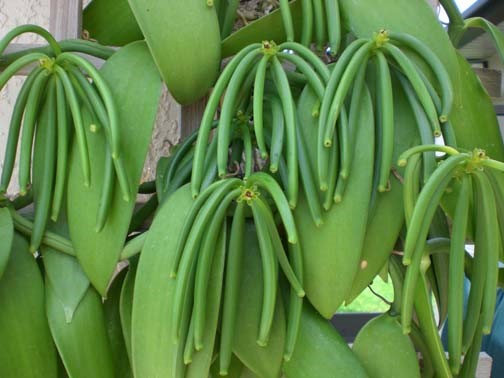If your diet gave you high cholesterol, it can lower it, too
Last week we talked about the prevention of high blood pressure. Also about the fact that certain activities and types of food assist in reducing the risk of clogged arteries leading to high blood pressure.
Cholesterol, in particular, is essential to life because it is used as the building blocks in the synthesis of many reproductive, growth and stress- relieving hormones, Vitamin D, bile salt, which the body uses to emulsify fats, etc.
It’s easy to eat your way to an alarmingly high cholesterol level. But did you know that the reverse is true, too? Changing what you eat can lower your cholesterol.
Doing this requires a two-pronged strategy: Add foods that lower LDL (low density lipo protein), the harmful cholesterol-carrying particle that contributes to artery-clogging atherosclerosis
At the same time, cut back on foods that boost LDL. Without that step, you are engaging in a holding action instead of a steady — and tasty — victory.
Cholesterol is important for the functions of the nerves, brains, skins, etc.
LDL must be low in content in the body and HDL should be higher than LDL.
It is, therefore, recommended that every adult over the age of 45, check his or her lipid profiles annually.
Usually, hypercholesterolemia (high blood cholesterol level) is detected through a blood cholesterol-screening test.
Different foods lower cholesterol in various ways. Some deliver soluble fibre, which binds cholesterol and its precursors in the digestive system and drags them out of the body before they get into circulation.
Some other foods give you polyunsaturated fats, which directly lower LDL.
And some contain plant sterols and stanols, which block the body from absorbing excess cholesterol.
So let us start with some examples of foods:
Oats, Corn, Millet, Guinea corn, Acha, cereals.
An easy first step to improving your cholesterol is having a bowl of oatmeal. It gives you 1 to 2 grams of soluble fibre. Add a banana or some strawberries for another half-gram. Current nutrition guidelines recommend getting 20 to 35 grams of fibre a day, with at least 5 to 10 grams coming from the soluble fibre; this is enough to reduce LDL by 5%. This would include Pap –also called Ogi without the sugar, please!
Beans and Soya beans:
Just have a cup of cooked beans is a great source of soluble fibre. It contains 2 to 3.5 grams of fibre per serving. Beans are especially rich in soluble fibre. They also take a while for the body to digest, meaning you feel full for longer after a meal. With so many choices — brown beans to white beans, red kidney beans to lentils, butter beans, black-eyed peas, and beyond — and so many ways to prepare them, beans are a very versatile food.
Eating soybeans and foods made from them, like tofu and soy milk, was once touted as a powerful way to lower cholesterol. Analyses show that the effect is more modest — consuming 25 grams of soy protein a day (10 ounces of tofu or 2 1/2 cups of soy milk) can lower LDL by 5% to 6%.
In order to avoid gut bloating and irritation increase, your quantity of beans intake gradually giving your gut time to adjust.
African yams, Amala, and Sweet potatoes: Half a cup of sweet potatoes can provide 1.5 grams of soluble fibre. It can be grilled in an oven, added to yam pottage or beans. African yams also contain vitamin B6 which is important in protecting blood vessels from damage, it also breaks down a material called homocysteine, which increases the risk of heart attacks and stroke. Amala is sourced from yam peel.
Cucumber
With its high potassium, magnesium and fibre content cucumber is another food that can help lower your blood pressure, and is widely available across Africa. Cucumbers belong to the same family as watermelon, pumpkin, zucchini and squash vegetables. Cucumber can be eaten fresh or pickled. Cucumber is high in potassium, magnesium, and fibre, which helps lower high blood pressure quite significantly.
Eggplant and Okra:
These two low-calorie vegetables are good sources of soluble fibre. Just half a cup of okra contains 1 gram of soluble fibre.
Variety of Fruits
Pineapple, pawpaw, guava, apples, avocado pear, purple grapes, lemon and limes, bananas.
One orange contains 1.8 grams of soluble fibre. Half a grapefruit has 1 gram.
Note that you need to eat the fruit to get the soluble fibre out, there is no fibre in just drinking the juice. Pectin – the soluble fibre is only found in the pith and pulp.
Lemons provide enormous health benefits as they are fat free, sodium free, cholesterol free, high in vitamin C and low in calories. Lemons contain limonoids, a substance associated with higher cholesterol levels.
One medium pear provides 1.5 grams of soluble fibre, and one medium red apple contains 1 gram of this essential nutrient. Eat the skin as well, please!!
Fresh vegetables:
Pumpkin, cabbage, lettuce, cucumber, carrots, onions, leek, garlic, greens, green and red peppers, tomatoes, garden eggs, spinach, water leaf, etc.
Healthy Oils:
Corn oil, sunflower oil, sesame seed oil, olive oil, cottonseed oil, virgin coconut oil, etc. in reduced quantity.
Blood thinning herbs: Garlic, Onions, Leek, Ginger, cinnamon, Cayenne, Black pepper,
Nuts :
A bushel of studies shows that eating almonds, walnuts, peanuts, and other nuts is good for the heart. Eating 2 ounces of nuts a day can slightly lower LDL, on the order of 5%. Nuts have additional nutrients that protect the heart in other ways.
Fatty fish:
Eating fish two or three times a week can lower LDL in two ways: by replacing meat, which has LDL-boosting saturated fats, and by delivering LDL-lowering omega-3 fats. Omega-3s reduce triglycerides in the bloodstream and also protect the heart by helping prevent the onset of abnormal heart rhythms.
Fibre supplements:
Supplements offer the least appealing way to get soluble fibre. Two teaspoons a day of psyllium, which is found in Metamucil and other bulk-forming laxatives, provide about 4 grams of soluble fibre.
Avocadoes:
Just half an avocado gives you 2 grams of soluble fibre. It has higher calories than other fruits, so keep it to a minimum if you are trying to lose weight.
Avocados contain significant amounts of good fats (oleic acid, healthy monounsaturated fat) and fibre that helps boost good cholesterol and lower bad. So, add avocados to your salad or make a nice avocado dip.
Celery, due to its high antioxidant content, it is known to lower the risk of heart disease by preventing oxidation of LDL (bad) cholesterol. Make it a part of your diet by including it in your vegetable juice, stir fry, salads, and soups.
Cinnamon, just half a teaspoon of cinnamon a day has shown to significantly reduce blood sugar levels, triglycerides, LDL (bad) cholesterol, and total cholesterol levels in people with type 2 diabetes. Add it to your green tea or use it in food to add flavour.
Garlic contains allicin which has shown to lower total cholesterol, LDL cholesterol, and triglycerides. Studies have shown that less than half a clove (900mg) of raw garlic a day can lower cholesterol by 9-12%. It can also be taken in the form of raw cloves one or two a day.
Ginger has shown to improve heart health. A study testing the properties of ginger found that ginger reduced cholesterol, triglyceride and blood sugar levels. It also raises HDL (good) cholesterol and helps improve blood circulation by reducing the risk of heart attacks and strokes. You can enjoy your morning cup of ginger tea or add it to your food and lower your risk of heart disease.
Green tea and zobo (sorrel & hibiscus tea) contain catechin polyphenols which are known to provide protective effects on the heart. Studies have shown that drinking green tea lowers total and LDL (bad) cholesterol but has no effect on HDL cholesterol and triglycerides. Since it has zero calories (when taken without sugar), it is great for people watching their weight.
Tomatoes are a significant source of a plant compound called lycopene, which reduces levels of LDL cholesterol. The body absorbs more lycopene if the tomatoes are processed or cooked, so drink tomato juice or less oily stew.
Foods containing sterols and plant stanol:
Peanuts, vegetable oils (corn, sesame, canola and olive oil), almonds and Brussels sprouts contain plant stanols and sterols. Smaller amounts are found in other vegetables and some fruits. Because it’s hard to get enough plant sterols/stanols from foods, food companies have begun to add plant sterols or stanols to some of their food products, such as vegetable oil spreads, mayonnaise, yogurt, milk, orange juice, cereals and snack bars.
Above all, whatever we decide to eat should be in moderation, for overall health and wellness.
Next week we will be discussing general issues on when to eat fruits or not.


